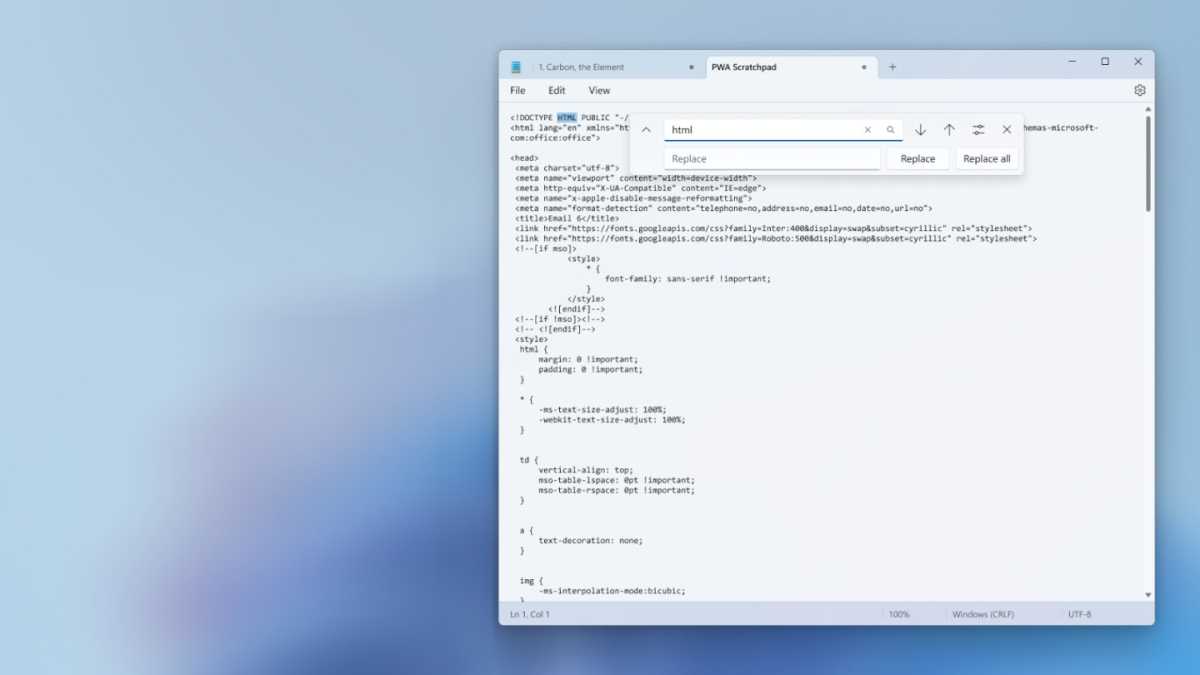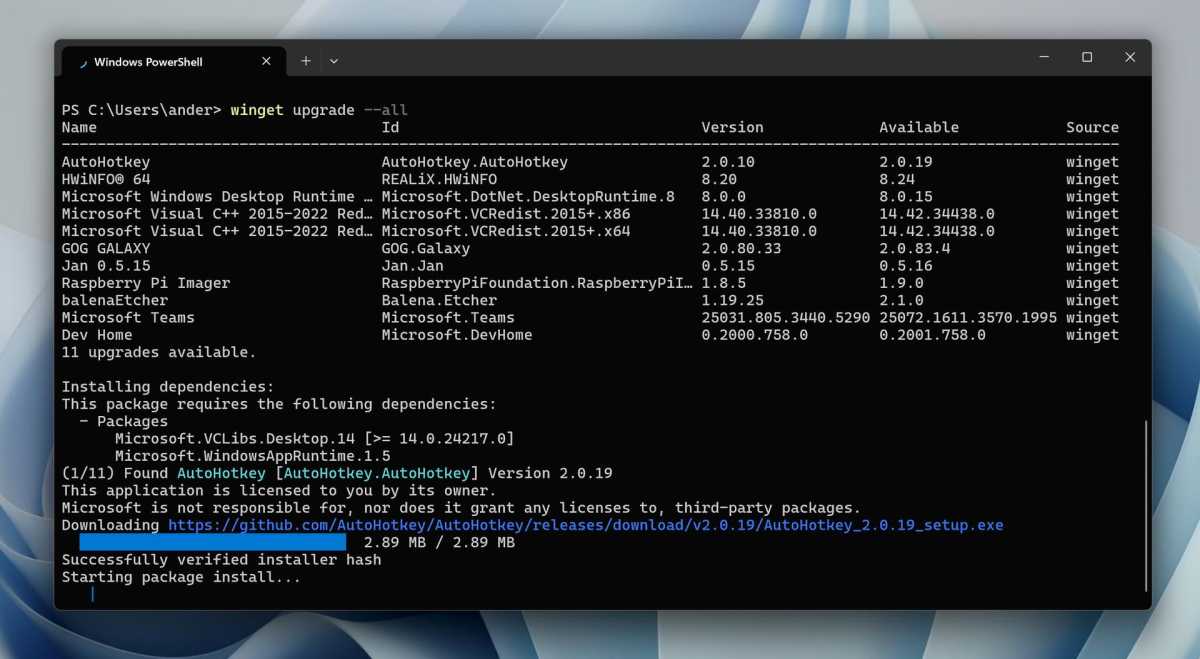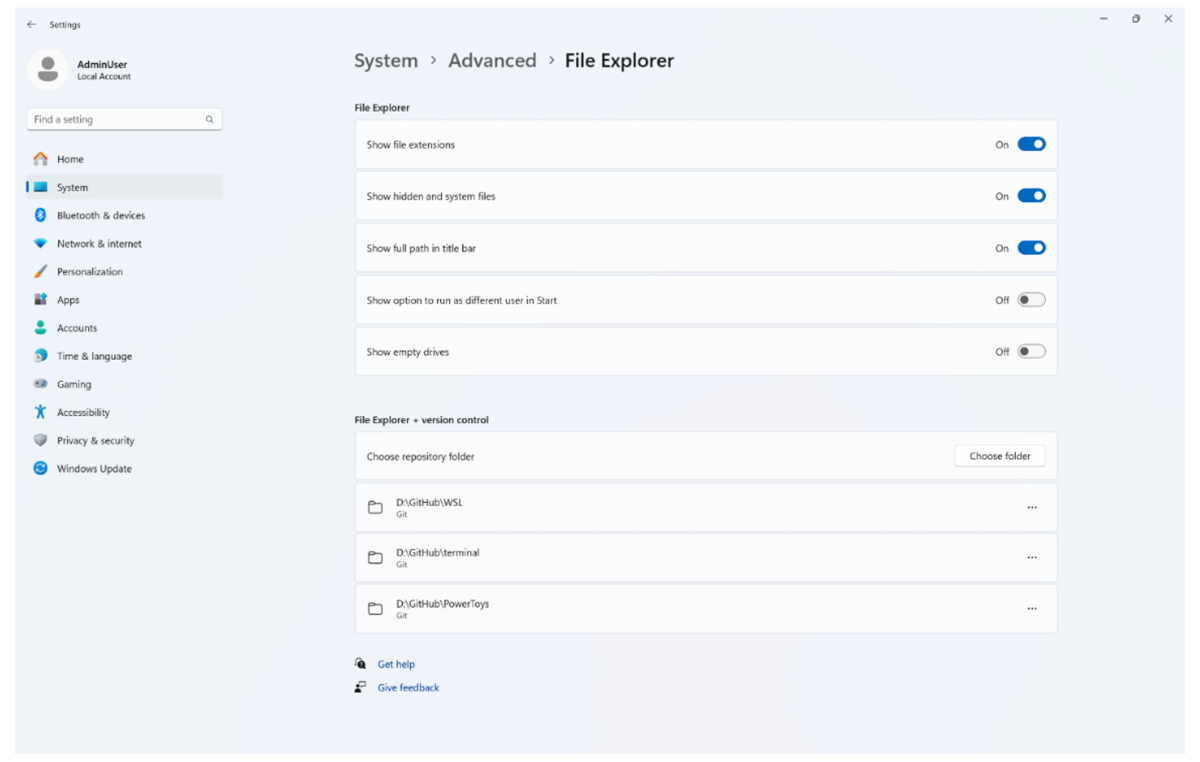A new command-line application, Windows Edit, is coming to Windows 11 as part of a bevy of tools aimed at developers and enthusiasts. But is a new tweak to WinGet the real star of the show?
It’s hard not to see Edit as a replacement for Notepad, the generally utilitarian interface that could be used for editing all sorts of things. Users also have access to Windows Subsystem for Linux, which allows access to text editors like vim — which can also be run within Windows.
At Microsoft’s own Build conference, the focus is obviously on developers, and providing them tools to ensure that Microsoft’s own applications, platforms, and services win out. Many of those include AI, of course. But others are just more fundamental tweaks to the familiar Windows platform.
Notepad, of course, is already a Windows application. But what appears to have drawn Microsoft’s attention is that it’s not natively integrated into the tools developers are already using.

IDG
Edit is currently in open source, Microsoft said, and will be added to Windows this summer. “Developers will be able to access this editor by running ‘edit’ in the command line,” Microsoft said. “This will enable developers to edit files directly in the command line, staying in their current flows and minimizing unnecessary context switching.”
PowerToys and WinGet get interesting updates
Microsoft has a history of taking third-party tools and integrating them, with permission, into Windows. PowerToys, the collection of free Windows utilities that is constantly being expanded, is a good example of this. Just before Build, Microsoft took PowerToys Run and added Command Palette.
“PowerToys Command Palette allows you to easily access all of your most frequently used commands, apps, and development tools – all from a single solution that is fast, customizable to your unique preferences, and extensible to include your favorite apps,” Microsoft says.
Another tool, arguably for developers, sounds right up the alley for power users, too. Windows Backup and Restore is aimed at consumers who want to move from PC to PC, but primarily use Windows apps. But WinGet debuted in 2021 as a command-line tool to quickly grab apps and any dependencies from the Internet.

Foundry
Now, Microsoft says that developers will be able to essentially take a snapshot of their machine. “Users will be able to effortlessly set up and replicate development environments using a single, reliable WinGet Configuration command,” Microsoft said. Developers will be able to capture the current state of their device, including apps, packages and tools (available in a configured WinGet source) into a WinGet Configuration file.”
It’s not clear where this WinGet configuration file will be stored, but being able to get your PC tweaked just so, and then move to a new, freshly-installed PC would be a big win for enthusiasts and developers alike. This feature will be added in “summer 2025,” Microsoft says, and will support Microsoft’s Desired State Configuration (DSC v3).
Finally, Microsoft is moving to a list of advanced settings within Windows, also aimed at developers. Currently hidden behind “flags” that must be enabled to see them, the new features reportedly include longer path lengths and more modular settings for features like the Taskbar and Terminal.

Microsoft
Finally, Microsoft is also making its Windows Subsystem for Linux open source — the very first issue filed on the original repository, said Pavan Davuluri, corporate vice president of Windows + Devices at Microsoft, in a blog post.




